Research Article
Issue Editorial Board

1971 Tokat doğumlu olan Savaşan, ortaöğrenimini Tokat İmam Hatip Lisesi’nde (1989), lisans öğrenimini ise İstanbul Üniversitesi Siyasal Bilgiler Fakültesi Maliye Bölümü’nde (1993) tamamlamıştır. Bir süre Sayıştay’da Denetçi Yardımcısı olarak çalıştıktan sonra Milli Eğitim Bakanlığı bursiyeri olarak Amerika Birleşik Devletleri’ne gitmiş; ekonomi alanındaki yüksek lisans ve doktorasını sırasıyla Colorado Üniversitesi (1997) ve Kansas Üniversitesi’nde (2002) tamamlamıştır.
2009 yılına kadar öğretim üyesi olarak Uşak Üniversitesi’nde çalışan Savaşan, bölüm başkanlığı ve dekan yardımcılığı gibi idari görevleri de yürütmüştür. Sakarya Üniversitesi’nde 2017 yılına kadar bölüm başkanlığı, Kaynarca Uygulamalı Bilimler Yüksekokulu müdürlüğü ve Sosyal Bilimler Enstitüsü Müdürlüğü gibi görevleri yürüten Savaşan 2013 yılında Stanford Üniversitesi’nde misafir araştırmacı olarak bulunmuştur.
2017-2018 ve 2018-2022 dönemlerinde sırasıyla Milli Savunma Üniversitesi rektör yardımcılığı ve Sakarya Üniversitesi rektörlüğü görevlerinde bulunan Savaşan kayıtdışı ekonomi, vergi afları ve uluslararası göç başta olmak üzere Maliye alanında çok sayıda makale ve kitap yayınlamıştır. Savaşan 2012’den itibaren İslam Ekonomisi ve Finansı alanında kongre ve çalıştay düzenlenmesine öncülük etmiş ve akademik danışmanlık ve yayınlarını bu alana yönlendirmiştir.
Merkezi Kayıt Kuruluşu Yönetim Kurulu Üyeliği/ Başkan Vekilliği ve Başkanlığı (Haziran 2016-Temmuz 2018) ve Teknopark İstanbul yönetim kurulu üyeliği (2017-2018) üniversite dışı yürüttüğü görevlerdir. Politik, Ekonomik ve Sosyal Araştırmalar Merkezi (PESA)’nın çalışmalarına da katkı sunan Savaşan, halen İslam Dünyası Akademisyen ve Yazarlar Birliği Başkanlığı görevini sürdürmektedir. Savaşan evli ve dört çocuk babasıdır.
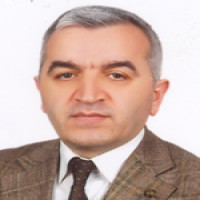




Baris Yuce is a Senior Lecturer and Program Director of MSc Engineering Business Management at the Faculty of Environment Science and Economy, the University of Exeter.
Prior to his current job, he worked at Cardiff University as a Post-Doc at the BRE Centre for Sustainable Engineering, School of Engineering, and at School of Computer Science, Machine Vision Group
Baris graduated from the Department of Industrial Engineering at Sakarya University (Turkey) in 2005. He obtained his MSc degree from Institute of Natural Science at Sakarya University in 2007. He then completed his PhD from Cardiff University, School of Engineering, in 2012.
Research Interests:
Urban Analytics, Machine Learning, Machine Vision, Life Cycle Assessment, Supply Chain Management, Sustainable Supply Chain Management, Industry 4.0 Applications, Ontology Applications, Smart Cities, Smart Buildings, Renewable Energy Management, Forecasting Systems, Deterministic and Stochastic Optimisation including: Integer Programming, Nonlinear Programming, The Bees Algorithm, Genetic Algorithm, Simulated Annealing, Ant Colony Optimisation and Hill Climbing, Fuzzy Systems and Fuzzy Logic, Rough Set Theory, Multi-Agent Systems, Single Machine Scheduling, Job-Shop Scheduling, Robotics and Automation, High Performance Computing (HPC) and Wireless Mesh Networking systems.
Project Baris has involved:
Industrial Funded (Waterman Group) (PI): Optimised decision support system to compute the embodied and operational carbon of Mechanical and Electrical systems in buildings.
UKRPIF funded: Net Zero – CREWW ENZO: Embodying Net Zero in Operation (Co-I), Digital Twin Development of the CREWW Building.
STFC Food Network+ (Co-I) - Developing a data-driven communication platform for improving farmed fish distribution in Kenya
KTP funded project with Smart Manufacturing (Co-I) - Implemention of a dual-production business model and a novel simulation tool to enable the optimisation of multi production manufacturing flows with Smart Manufacturing.
RIVIC (3D Mesh Processing Systems) - Welsh Government Funded,
SPORTE2 (Optimised Energy Management Systems for Sports Facilities) - EC-FP-7 Funded,
KnoholEM (Holistic Knowledge-based (Ontology Added) Energy Optimisation Systems) - EC-FP-7 Funded,
Estate Energy Optimisation (EEO)-Box ( Optimised Domestic Appliance Scheduling and Energy Management Systems) - BRE Funded
WANDA (River Depth Prediction Systems) - TSB Funded
MAS2TERING (Multi-Agent-based Secure Smart Grid Management Systems) - EC-FP-7 Funded

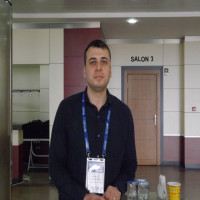

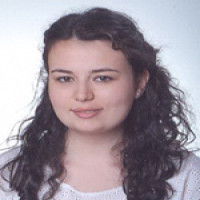
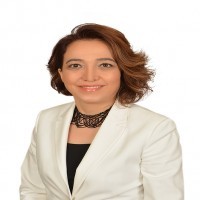





Lisans: Akdeniz Üniversitesi
Yüksek Lisans/Doktora: Gazi üniversitesi



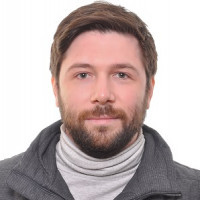
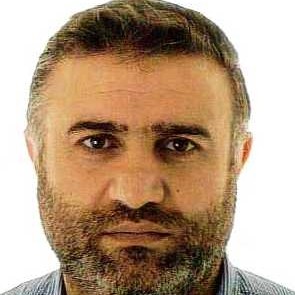


1984 yılında doğdu. Lise eğitimini, İstanbul Davutpaşa Süper lisesinde 2002 yılında tamamladı. Lisans eğitimini İzmir Dokuz Eylül Üniversitesi, Bilgisayar Mühendisliği Bölümünde 2009 yılında tamamladı. Yüksek lisans eğitimini, Kocaeli Üniversitesi, Bilgisayar Mühendisliği Bölümününde 2012 yılında tamamlayarak master derecesini aldı. Doktora eğitimini Sakarya Üniversitesi, Bilgisayar Mühendisliği Bölümünde 2016 yılında tamamlayarak doktora derecesini aldı. Şuan Sakarya Üniversitesi Bilgisayar ve Bilişim Bilimleri Fakültesi, Bilgisayar Mühendisliği Bölümünde Dr. Öğr. Üyesi olarak görev yapmaktadır. Ulusal ve uluslararası birçok yayını ve bu yayınlara atıfları bulunmaktadır. Birçok uluslararası bilimsel sempozyumlarda düzenleyici olarak görev almıştır. Lisans düzeyinde vermiş olduğu birçok dersin yanında basılmış bilimsel kitapları bulunmaktadır. Makine öğrenmesi, elektronik burun, bulanık mantık, enerji tüketim tahmini, yazılım testi ve kalitesi çalıştığı konular arasındadır. TÜBİTAK projelerinde danışmanlık yapmaktadır. Evli ve 3 çocuk babasıdır.

Muhammed Maruf Öztürk is currently an Associate Professor at Computer Engineering Department of Engineering Faculty at Suleyman Demirel University. He received his Ph.D. degree in Computer Engineering from Sakarya University. His main interests lie in artificial intelligence in software testing, energy-aware software systems, effort estimation, and hyperparameter optimization. He published several papers coping with software engineering problems.
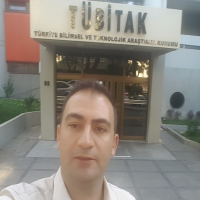

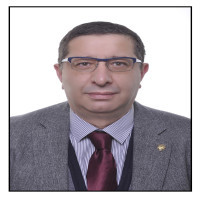

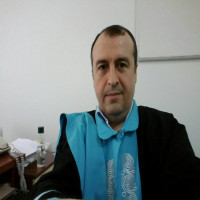


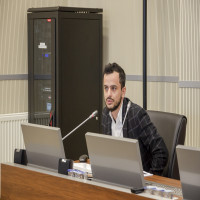







 Web
Web
AKADEMİK GÖREVLER
DOÇENT 2018-Devam ediyor, KOCAELI ÜNIVERSITESI/MÜHENDISLIK FAKÜLTESI/ÇEVRE MÜHENDISLIGI BÖLÜMÜ
DOKTOR ÖGRETIM ÜYESI 2008-2022, KOCAELI ÜNIVERSITESI/MÜHENDISLIK FAKÜLTESI/ÇEVRE MÜHENDISLIGI BÖLÜMÜ
ARASTIRMA GÖREVLISI 1997-2008, KOCAELI ÜNIVERSITESI/MÜHENDISLIK FAKÜLTESI/ÇEVRE MÜHENDISLIGI BÖLÜMÜ
ÖĞRENİM BİLGİSİ
Doktora 2002-2006, Tez adı: Kocaeli İli'nde NOx emisyon dağılımlarının modellenmesi (2006) Tez Danışmanı:(HAMZA SAVAŞ AYBERK), KOCAELİ ÜNİVERSİTESİ/FEN BİLİMLERİ ENSTİTÜSÜ/ÇEVRE MÜHENDİSLİĞİ ANABİLİM DALI
Yüksek Lisans 1998-2001, Tez adı: İzmit Klinik ve Tehlikeli Atıklar Yakma ve Enerji Üretim Tesisinde proses tanıtımı ve halojenlerin prosesteki yeri (2001) Tez Danışmanı:(HAMZA SAVAŞ AYBERK), KOCAELİ ÜNİVERSİTESİ/FEN BİLİMLERİ ENSTİTÜSÜ/ÇEVRE MÜHENDİSLİĞİ ANABİLİM DALI
Lisans 1993-1997, Tez adı: ÇED ve ÖRNEK BİR ÖN ÇED UYGULAMASI Tez Danışmanı:(HAMZA SAVAŞ AYBERK), KOCAELİ ÜNİVERSİTESİ/ÇEVRE MÜHENDİSLİĞİ BÖLÜMÜ

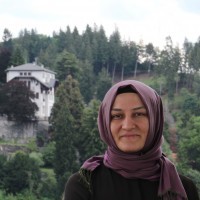
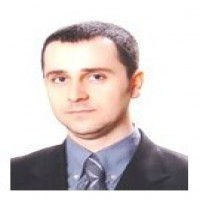


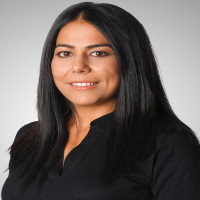
Aim & Scope
SAUJS, Turkey and even across the globe, engineering and basic sciences will contribute to the scientific development of all disciplines in the field to increase scientific research, disseminate and aims to share with the public the academic studies of different disciplines.
The research topics or areas covered by SAUJS are listed below (Topics are not limited to these but generally consist of these):
Computer Engineering,
Cyber Security,
Electrical-Electronics Engineering,
Biomedical Engineering,
Information Systems,
Mechanical and Energy,
Mechanical Design,
Mechatronics Engineering,
Automotive,
Fire & Disaster Management,
Industrial Engineering,
Quality Management,
Civil Engineering,
Geophysical Engineering,
Environmental Engineering,
Architecture,
Metallurgical and Materials Engineering,
Physics,
Chemistry,
Mathematics,
Biology,
Genetic Engineering,
Nanoscience and Nanotechnology,
Agricultural Engineering,
Food Engineering,
Industry 4.0
Author Guidelines
Online Submissions
Already have a Username/Password for Sakarya University Journal of Science?
Go to Login
Need a Username/Password?
Go to Registration
Registration and login are required to submit items online and to check the status of current submissions.
This guide applies to the majority of Sakarya University Journal of Science(SAUJS) Manuscripts submissions system.
Author Guidelines
Before submission please check the SAUJS homepage for information SAUJS scope, available article types, specific manuscript length limits and details of any variations to the peer review process that might apply.
Please read author guidelines first. You can find more detail in our author guidelines which are presented in the style of a typical article, and offer suggestions on how to format a manuscript.
Download Template File (.dotx)
INTRODUCTION
This document has been adapted from earlier style guides used for the “Sakarya University Journal of Science (SAUJS)”. Please write you papers using this style guide.
GENERAL REQUIREMENTS
Papers for this journal should be no longer than 20 pages, including references, appendices, figures, and tables. Tables and figures should be inserted directly into the manuscript, close to where they are referenced. Both tables and figures should be numbered sequentially from 1 to n. Do not re-start the numbering with each section in the paper. The paper should be written in Microsoft Word. We have observed that keeping papers on the shorter side usually improves the writing and makes the logic tighter, so we are maintaining a rather strict page limit. It is important that authors follow our instructions carefully. To help you in this task, we have written this document in the recommended format and the Word version includes the embedded styles.
Page Limit
The full manuscript must not exceed 20 pages. It must include an abstract of up to 300 words. The 20 pages should include all tables, figures, and references.
Quality of Your Document
Please be sure to check your document for spelling and grammar before submitting it electronically.
Margins
In the first page which includes Title and Abstract must be 5 cm from top, 2.5 cm from bottom, left and right. For the other pages, left and right margins must be 1.5 cm and others should be 2.5 cm, with text fully justified. This guideline is a sample file for all those requirements. You are encouraged to hyphenate words to obtain more even word spacing.
Spacing
The body text of the paper should be single-spaced and fully justified in 12 point Times New Roman font. Do not leave one-line space between paragraphs, and do not indent the first line of a new paragraph.
Use one space after punctuation marks such as periods, commas, semi-colons, and colons. No space after internal periods in abbreviations (a.m., i.e., U.S.).
Do not insert one-line space between paragraphs. Use 12 pt. line after and before the all paragraphs.
Headings
For the main headings use 12 point Times New Roman bold font, all letters caps, centered. Use 12 pt. line before and 18 pt. line after the main headings.
For Level 2 headings, use justified 12-point Times New Roman font and capitalize the first letter of the first word. Please use the MS Word font styles for the headings
Headers
Please do not put any header or footer in your paper.
First Page Requirements
Title of the Article
Do not use a separate title page. For the article title, use 14-point Times New Roman bold font, only first letter caps, centered.
Authors
Do not write down any information about authors at this stage. Author information will be required after your submission is accepted for publishing.
Abstract and Keywords
Use no more than 300 words in the abstract to indicate the nature of the topic and to briefly summarize the findings of the paper. Put “Keywords:” on the next cell, followed by no more than five keywords. Keywords must be selected from Turkey Science Terms (http://www.bilimterimleri.co it).
The Body of the Paper
The body of the paper should be separated from the abstract by two-line spaces. The “body text” style used here is justified 12-point Times New Roman font. In body text, space no space after each period that ends a sentence. Do not leave a line space between paragraphs. Do NOT indent the first word of a new paragraph.
Footnotes, Figures, and Tables
Footnotes
Footnotes are generally discouraged but may be used when necessary. They should be numbered consecutively and placed at the bottom of the page on which they appear, separated from the body of the text by a line one inch long (or 10 spaces). Two footnotes on the same page should be separated by a line space. Be sure to observe the margin requirements at the bottom of the page. Footnotes should not be attached to equations.
Figures and Tables
Use a 11 pt Times New Roman font for figure and table captions. Figures and tables should appear soon after their first citation in the text and should be included in a manner that allows easy reference while reading the text. Please try to make them as legible as possible.
Figure captions should be located below the figure, centered and not bolded with no period following the figure number or at the ends of the lines.
Table captions should be located above the table on two lines, not bolded, with the table number on the first line, the description on the next line, both lines left-justified and no periods at the end of the table number or the lines. Leave one blank line between the end of the caption and the table.
For both table and figure captions, capitalize only the first letter of the first word unless a word is normally capitalized because it is a proper name. Do not use bold fonts. Do not use periods after the table and figure numbers, and no periods at the ends of the lines. Refer to all tables and figures nearby in the text.
Tables should be centered, if possible across the entire page, as shown in Table 1. The entries in the cells of the table should be left justified. The font used for the cell entries is left to the discretion of the author. In general tables look better and are easier to read if you minimize the number of vertical lines and use only horizontal lines so far as possible as shown in template file.
Citations
To format your references please use the IEEE Citation Reference:
https://www.ieee.org/documents/ieeecitationref.pdf
Please left-justify your references and do not use the hanging indents preferred by the IEEE. Books, journals, and other references should be cited in the main document text by a numerical order.
Quotations
If a quotation contains two or more sentences and four or more lines, it should be set off from the body of the text with 1.5-inch left and right margins.
Formulas
All formulas should be placed on separate lines, justified, and numbered consecutively. Be certain that all symbols are adequately defined. Identification numbers should be placed in the right side of the formula.
Appendices
Appendices, if needed, should immediately follow the body of the paper and precede the references. Please use appendices sparingly. All tables and figures should be referred to in the text and located in the body of the paper, as near as possible to where they are referred to in the text.
Acknowledgments
If you wish to thank the referees, editors, or anyone who contributed to the study, then this thank you text should be written under the heading "Acknowledgments".
Funding
Please provide all the details requested by your funding and support organizations under the heading Funding as follows:
“This study is supported by Sakarya University Scientific Research Projects Coordination Unit. Project Number: 2016-01-02-001.”
If no support was received, then, under this heading "The author (s) has no received any financial support for the research, authorship or publication of this study." statement should be written.
The Declaration of Conflict of Interest/ Common Interest
Authors should indicate in the cover letter any conflicts of interest that may arise from financial relationships, personal relationships or competition, academic competition, or differences in ideologies or beliefs. These conflicts can be personal, commercial, political, academic or financial. As the author, you must make a report if this is the case. For example,
"In accordance with the conflict of interest policy and my ethical obligation as a researcher, I inform you that ……… [firm, institution, person] may be affected by the research reported in the accompanying document. I have fully disclosed this conflict of interest situation to the journal and I have an approved plan to manage potential conflicts.” like.
If there is no conflict of interest or common interest, then, the following statement should be written:
“No conflict of interest or common interest has been declared by the authors”.
Authors' Contribution
Under this heading, "The authors contributed equally to the study" or "The first author contributed 60%, the second author 40%." expressions such as should be included.
The Declaration of Ethics Committee Approval
If the study requires the approval of the ethics committee, the name, date, and number of the board from which the consent was obtained should be specified under this heading. In addition, information about the permit should be included in the METHOD section. A copy of the permission obtained should be uploaded as ETHICS COMMITTEE APPROVAL CERTIFICATE at the article submission stage.
If the study does not require ethics committee permission, the statement "This study does not require ethics committee permission or any special permission" should be included under this heading.
In addition, ETHICS COMMITTEE APPROVAL IS NOT REQUIRED DECLARATION FORM must be signed by the responsible author and uploaded instead of the ETHICS COMMITTEE APPROVAL CERTIFICATE to be requested at the article submission stage.
The Declaration of Research and Publication Ethics
The following statement should be included under this heading:
“The authors of the paper declare that they comply with the scientific, ethical and quotation rules of SAUJS in all processes of the paper and that they do not make any falsification on the data collected. In addition, they declare that Sakarya University Journal of Science and its editorial board have no responsibility for any ethical violations that may be encountered, and that this study has not been evaluated in any academic publication environment other than Sakarya University Journal of Science.”
In addition, the RESEARCH AND PUBLICATION ETHICS DECLARATION FORM regarding this statement should be signed by the corresponding author and uploaded as an additional file when submitting the article.
REFERENCES
A sample references list is given below;
[1] T. Wei and B. Khoshnevis, “Integration of process planning and scheduling: a review,” Journal of Intelligent Manufacturing, vol. 24, no. 6, pp. 51–63, 2000.
[2] R. Meenakshi Sundaram and S. Fu, “Process planning and scheduling — A method of integration for productivity improvement,” Computers & Industrial Engineering, vol. 15, no. 1–4, pp. 296–301, 1988.
[3] Y. Chu, F. You, J. M. Wassick, and A. Agarwal, “Integrated planning and scheduling under production uncertainties: Bi-level model formulation and hybrid solution method,” Computers and Chemical Engineering, vol. 72, pp. 255–272, 2015.
[4] F. S. Chan, V. Kumar, and M. Tiwari, “Optimizing the Performance of an Integrated Process Planning and Scheduling Problem: An AIS-FLC based Approach,” 2006 IEEE Conference on Cybernetics and Intelligent Systems, pp. 1–8, 2006.
[5] W. Tan and B. Khoshnevis, “Integration of process planning and scheduling— a review,” Journal of Intelligent Manufacturing, vol. 11, no. 1, pp. 51–63, 2000.
[6] D. Yip-Hoi and D. Dutta, “A genetic algorithm application for sequencing operations in process planning for parallel machining,” IIE Transactions (Institute of Industrial Engineers), vol. 28, no. 1, pp. 55–68, 1996.
[7] B. Yuan, C. Zhang, X. Shao, and Z. Jiang, “An effective hybrid honey bee mating optimization algorithm for balancing mixed-model two-sided assembly lines,” Computers and Operations Research, vol. 53, no. 5–8, pp. 32–41, 2015.
Submission Preparation Checklist
As part of the submission process, authors are required to check off their submission's compliance with all of the following items, and submissions may be returned to authors that do not adhere to these guidelines.
The File of the Manuscript
This file includes article title, abstract, keywords; main text input, material and method, results, discussion; thank; fund financing information, non-conflict statement; authors' contribution, ethics committee approval statement, research and publication ethics statement, references; should include attachments (if any) information. Author information should not be included in this file. Document properties should be anonymized (The person who wrote the document should not be known. For this, the Remove all options should be selected from the window that opens by saying File-Check For Problems-Examine Document in your word document.)
ORCID
From 1 December 2017 all submitting authors will need to have an Open Researcher and Contributor ID (ORCID) identifier (iD) associated with their affiliation account.
ORCID is dedicated to solving the longstanding problem that author’s contributions can be hard to recognize in scholarly communication. This can be due to authors changing name or other authors having the same name. Providing the solution, ORCID has created a central registry of unique identifiers for individual researchers.
We encourage all authors and referees to register for a free ORCID iD or to associate your existing ORCID iD account when you update your account, submit your manuscript or referee an article in our submission and peer review system.
The benefits of having an ORCID iD are that:
- It uniquely identifies you and connects you to your publications:
- We can include your iD in your published manuscripts, and the publication lists in your ORCID record will then be automatically updated via Crossref (you will need to grant permission to Crossref in the first instance).
- You can enhance your ORCID record with your professional information and link to your other identifiers, such as Scopus, ResearcherID or LinkedIn.
- It may be included on your webpage, as well as when you submit publications, apply for grants and in any research workflow.
- If you referee for us and claim credit via Publons, your ORCID record can also be automatically updated (you will need to grant permission for this in the first instance).
Documents required to be uploaded in addition to the article file:
Copyright Notice
Ethics Committee Approval is not Required Declaration Form (Required at the Submission Stage of the Articles for Studies that Do not Require Ethics Committee Permission) -This form will be uploaded instead of the Ethics Committee Approval Document.
Research and Publication Ethics Declaration Form (Required at Article Submission Stage) -It will be uploaded as an additional file.
Cover Letter - Required
Except for the Author Contribution Form and The Declaration of Conflict of Interest/Common Interest, the above forms must be uploaded by either all authors or signed only by the corresponding author. Author contribution form and The Declaration of Conflict of Interest/Common Interest and The Declaration of Conflict of Interest/Common Interest, must be signed by all authors.
It is sufficient to send only the English form among the forms written in both languages. Turkish forms are for informational purposes only.
Ethical Principles and Publication Policy
- Articles submitted to the journal must be original and scientific work of the author (s). It is essential that the information created in a scientific study is new, proposes a new method or adds a new dimension to existing knowledge. The presented study should be a research article only.
- If authors have used the works and / or statements of others, they should ensure that this is cited correctly and appropriately. The list of references should be complete. Plagiarism and fake data should not be included.
- Publications that are effective in determining the quality of the study reported in the article should also be mentioned. Plagiarism takes many forms, from writing someone else's publication like the author's to copying (without attributing) important parts of someone else's work, or in other words, getting the result of research conducted by others. Any kind of plagiarism, fraudulent or deliberate misrepresentation constitutes unethical publishing behavior and cannot be accepted.
- All studies submitted to SAUJS are checked for plagiarism by the journal secretary through the iThenticate program at the pre-check stage. The similarity rate in the plagiarism report created after the plagiarism check should be at most 30%. Articles with a similarity rate above this rate are directly rejected by the journal secretary.
- Articles with a similarity rate of 30% or less are directed to the relevant editor after spelling and language control. Even if the similarity rate of the article is not over 30%, the editors may ask the authors to make corrections regarding the relevant parts of their work or remove the work from the publication process after the similarity report evaluation. For this reason, authors should not include all quotation paragraphs in their work.
- If there is a suspicion of plagiarism in a published article, the editor in chief of SAUJS initiates the necessary investigation and sends the situation to the indexes where the journal is scanned together with the relevant institutions and authorities.
- All responsibility of the work belongs to the authors. Studies should be prepared in accordance with the international scientific ethical rules, which we have mentioned on this page. Under the heading "Research and Publication Ethics Statement" before bibliography in all submitted articles, the statement
"The author(s) of the article declare that they comply with the scientific, ethical and quotation rules of SAUJS in all processes of the article and that they do not make any falsification on the data collected. In addition, they (he/she) declare(s) that Sakarya University Journal of Science and its editorial board have no responsibility for any ethical violations that may be encountered, and that this study has not been evaluated in any academic publication environment other than Sakarya University Journal of Science."
should be included. - In addition, for the above mentioned Research and Publication Ethics Statement, the RESEARCH AND PUBLICATION ETHICS DECLARATION FORM signed by the responsible author should be uploaded as an additional file at the submission stage.
- ETHICS COMMITTEE APPROVAL must be obtained for research in all disciplines and for clinical and experimental studies, human and animal studies that require an ethical committee decision, THIS APPROVAL MUST BE SPECIFIED AND CERTIFIED IN THE ARTICLE.
In studies requiring ethics committee approval, information about the permission (name of the board, date and number) should be included in the method section and also on the first / last page of the article.
Studies Requiring Ethics Committee Permission
- All kinds of research conducted with qualitative or quantitative approaches that require data collection from participants using questionnaires, interviews, focus group work, observation, experimentation, interview techniques.
- Research using humans and animals (including material / data) for experimental or other scientific purposes.
- Research on animals
- Retrospective studies in accordance with the law on the use of personal data
- Studies should not be published in another journal or submitted to another journal for printing. For this, a cover letter explaining this situation is requested from the authors.
- When submitting the article to our journal, authors must sign the "COPYRIGHT TRANSFER FORM" and upload it through the system. All authors must sign this form, or only the RESPONSIBLE AUTHOR must sign on behalf of all authors.
- Authors are expected to carefully consider the list and order of authors before submitting their articles, and to present the exact list of authors at the time of original submission. Adding or removing author names from the author list should only be done before article submission. In addition, the submission of the article to the journal should be made by the responsible author, and the information (author name, e-mail address, orcid information, etc.) of all authors of the article should be added to the system during the article submission phase. Submissions that do not comply with this rule will be rejected by our journal secretary.
- Those who have not contributed to the article should not be stated as the article author. Relevant authors must have participated in the submitted work individually and should take all responsibility for this work.
- Contribution rates of all the authors of the article to the article process should be stated under the heading "Authors' Contributions" before the bibliography at the end of the article (This statement will be stated in the latest revision file to be sent to the layout editor after the acceptance of the article, as the referees should not know the names of the authors due to the principle of blind review.)
- All authors must see and approve the final version of the submitted article before submission.
- The text, figures, tables and documents contained in the article must not violate the copyrights of other persons.
- Authors should not arbitrarily withdraw the article while the peer review process continues on the submitted article. If they want to withdraw, they can withdraw by obtaining approval by sending a letter to the SAUJS editor-in-chief with the required explanation.
- Authors are encouraged to write a thank you text at the end of the article, after the article is accepted, thanking the person (s), or institutions, who supported the process of the article. The thank you text written to the people should be under the title of ACKNOWLEDGEMENTS. The text of acknowledgment to the institutions from which Fund-Funding has been received should be written under the title of FUNDING (For example, "This study was supported by the [Fund Agency] under the Grant [Fund Number].")
- If there are conflicts of interest (or common interest) regarding the submitted article, the reason should be stated in the cover letter. If no conflict of interest is declared, the statement “No potential conflict of interest has been declared by the authors” will be added to the end of the article while the article is being prepared for publication.
- When an author notices a material error or mistake in his or her published work, he should immediately notify the editor or publisher of the journal and cooperate with the editor to correct the article.
- Raw data can be requested from the authors regarding their articles during the evaluation process. In such a case, authors should be present to present the expected information and documents.
- It is the editor's responsibility to decide which of the articles submitted to the journal will be published. The editor will review articles regardless of the authors' race, gender, sexual orientation, religious belief, ethnicity, nationality, or political philosophy. The decision will be based on the article's importance, originality, clarity, validity of the study, and relevance to the journal's scope. They should take care that the study contributes to readers, researchers and practitioners. Current legal requirements regarding defamation, copyright infringement and plagiarism should also be considered. Editors should not show any privileges to the authors of the articles submitted to the journal and should fulfill their duties in a balanced, objective and fair manner.
- The editor should not reveal any information about a submitted article to anyone other than the relevant author, referees, potential referees and publisher.
- Unpublished material disclosed in a submitted manuscript will not be used by the editor or editorial board for their own research purposes without the express written permission of the author.
- Editors should strive to continuously improve SAUJS and increase the quality of the publication.
- They are responsible for the determination and implementation of all policies of the journal.
- During the evaluation of the studies, they should not bring together people with whom there might be a relationship. Editors who make the final decision about the articles are expected to have no personal, professional or financial ties with the authors of the study.
- They should include the support or sponsored work in the evaluation process in the same way as any other study.
- If the study is not prepared in line with the journal's purpose and scope, they should reject the study directly.
- They should take the necessary measures to prevent possible conflicts of interest and evaluate the existing statements, if any.
- They should apply the necessary sanctions in case of ethical violations related to the study.
- During the evaluation process, they must appoint an arbitrator according to the blind arbitration principle and respect the principle of confidentiality.
- In order to evaluate the studies objectively, editors should act by checking the appropriateness of the referees' field of expertise and the subject of the study, not according to the relationship of interest when determining the referees.
- Editors should work on the continuous updating and expansion of the referee pool.
- When publishing issues in the journal, they should include not only articles in certain fields, but also a wide range of articles in every field within the scope of the journal.
- They must ensure the protection of personal data in articles reviewed; they must protect individual data of authors, referees and readers.
- They should take necessary precautions against people who abuse their job.
- Editors should provide as much feedback as possible to authors 'or referees' questions about the process. They should also be open to negative criticism.
- Editors should check the submission files, make a referee assignment after making sure that the files except the article file are complete. It should be checked whether the author has uploaded all the additional statements requested by the journal, signed.
- In all processes of the articles, they should act according to the rules of the journal's publication process.
- To contribute to the editor's decision-making process by examining the work sent to them for evaluation, objectively and objectively (regardless of religion, language, race, gender, political opinion, economic interest) within the given time.
- To accept the evaluation of only studies related to the field of expertise
- To provide constructive and developing suggestions to increase the quality of the study it evaluates.
- In accordance with the principle of confidentiality, they should destroy the study after the evaluation process, but if they want to use the study after it is published, they should use it.
- When referees understand that there is a conflict of interest or a common interest, they should decline to review the article and inform the editor of this. Reviewers should not consider articles that contain conflicts of interest arising from competitive, collaborative, or other relationships or link with any author, company or institution associated with the articles.
- They should make the assessment in a constructive and courteous language. They should not make derogatory personal comments (especially on articles that are rejected) that contain hostility, slander, and libel.
- All articles received for review should be treated as confidential documents. It should not be discussed or discussed with others unless authorized by the editor.
- Reviewers should identify cases where the relevant published work cited in the article is not cited in the reference section. They should indicate whether observations or arguments from other publications accompany the relevant source. Referees will inform the editor about significant similarities or overlaps between the reviewed article and other published articles for which they have personal information.
It is recommended to take into account the following information taken from YÖK Scientific Research and Publication Ethics Directive.
e) Misuse of the resources, places, facilities and devices provided or allocated for scientific research,
SAUJS only reviews research articles written in English.
In SAUJS, which has been publishing issues since 1997, a volume has been published every year since 2017 and each volume consists of 6 issues (February, April, June, August, October, December).
WAGE POLICY
• PRE-EVALUATION PROCESS
Articles submitted to SAUJS primarily fall into the journal secretary's system. The journal secretary checks whether the files required for article submission are fully uploaded to the system by the author and whether the file names are appropriate. Also, it creates the similarity report of the article and uploads it to the system. If there are deficiencies or errors in the files or if the similarity rate of the article is over 30%, the article is sent again to the author to make the necessary updates.
SAUJS works on the principle of double blind arbitration. This means that the author (s) of the article will not know the identities of the referees who will evaluate the article, and the referees will not know the identity of the author (s). The aim here is to have an unbiased assessment.
Referees who accept the evaluation access the article file through the system (in this process, the referee cannot see the names of the article authors on the system) Examines the article within 15 days and uploads the completed referee evaluation form to the system.
Price Policy
Article submission/processing is free of charge.
INDEXING & ABSTRACTING & ARCHIVING
Bu eser Creative Commons Atıf-Ticari Olmayan 4.0 Uluslararası Lisans kapsamında lisanslanmıştır .
